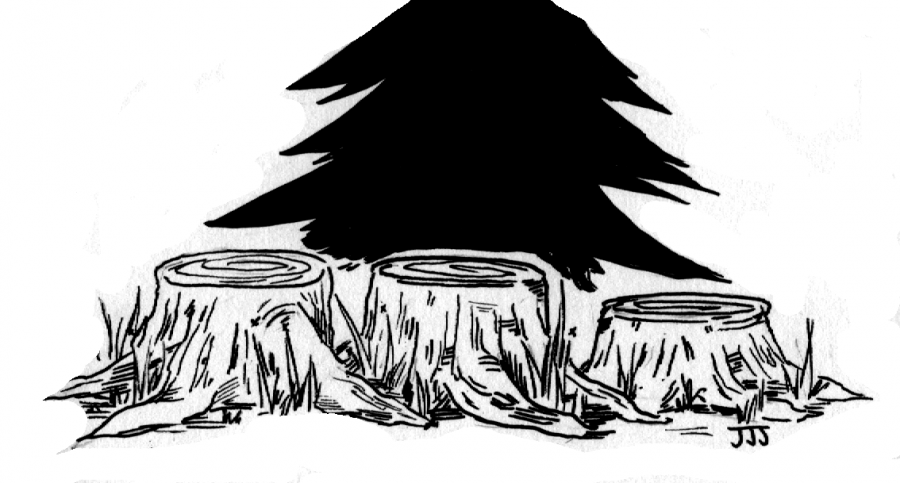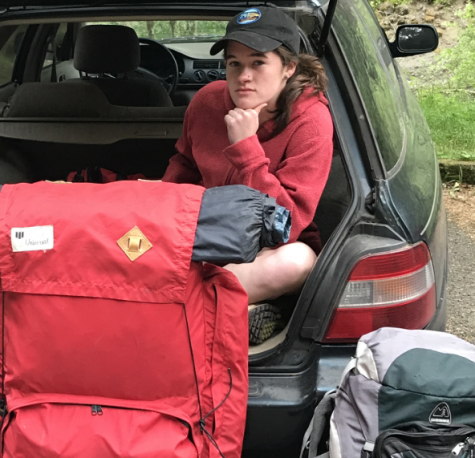All that Remains: The Aftermath of the Eagle Creek Fire
December 5, 2017
Although people caused the Eagle Creek Fire, forest fires can heal themselves and bring more good to the ecosystem than bad.
With variables like human carelessness, a long dry summer, strong winds and climate change, it is inevitable that fires will occur, despite people trying to prevent them.
“Fires are a natural part of the Gorge. It only seems like a bad thing from a human perspective. Without fires, our forest would not be healthy and would contain a very low diversity of plant species,” said Dr. Patrick Edwards, an environmental science professor at PSU.
In addition to this, the Gorge is old and the bigger trees sucked up all the nutrients that new plants need to grow. Now, other plants will be able to flourish and trees that survive won’t have as much competition. Another result of the fire is that the dead trees serve as habitats for birds, bugs and mammals, and fallen trees create a place for salmon to grow before entering the ocean.
A 2011 burn at Mt. Hood’s Dollar Lake had many similarities to the Eagle Creek fire. The combination of a mosaic burn and similar climate of the surrounding area make it an excellent example of what the Gorge recovery might look like. The Dollar Lake Fire was left to recover at nature’s pace, without aid from people.
The immediate aftermath of the Dollar Lake Fire left complete burn in the heart of the fire. However, most of the trees more so boiled than burned. The outside bark was charred but the inside of the tree was left clean and unburned. Eventually, the bark peeled off and served as mulch for new seeds and growth. Seeds spread during the fire and began to establish in 2013.
The Eagle Creek Fire’s ecosystem will probably renew in the same way. Anna Kate Peterson, Cleveland’s environmental systems and societies teacher, predicts that growth will start with mosses. Next will be plants, then wildlife and finally trees.
One way Cleveland is helping our forests for the future is by staying educated about them and trying to understand the dynamics of forest fires. The IB Environmental Systems and Societies class researched about recent hurricanes and forest fires, and they discovered that 90 percent of forest fires were caused by human carelessness and ten percent were caused by nature.
Whenever forest fires occur, people put them out. Dr. Edwards’ advice towards preventing fires is to let the little fires burn. When the forest gets thick it can result in larger fires. Small fires can be good because they thin out the forest. Selective logging can also help thin out the forest (as opposed to clear-cut).
As the Gorge rejuvenates itself, there are things people can do to help. This involves supporting the communities impacted by the fire through donations. For example, one can donate to Cascade Red Cross, which is assisting displaced Gorge residents. People can also donate to the Gorge First Responders. They have a Go Fund Me created by Thunder Island Brewery. The money will be evenly distributed to local fire departments in Carson, Cascade Locks, North Bonneville, Skamania, Stevenson and Washougal. Other ways to donate can be found on the Friends of The Columbia Gorge website.
It is dangerous to go into the parts of the Gorge that are closed off because the trail system is gone and landslides can happen. If people want to go to the Gorge, there are several trails on the Washington side that are open like Beacon Rock and Dog Mountain.
As far as reforestation, the forest burned in a mosaic, so there will be different biodiversity in different locations and elevations due to different levels of burn. The organization Friends of the Gorge is waiting to see what the specialists recommend before they act.
Everyone will miss the areas of the Gorge that have been burned, and it won’t be the same in our lifetime. This is a sad fact, however, fires are usually good for an ecosystem and we now have the opportunity to see how strong and resilient our forests are.
















